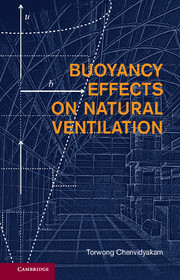Refine search
Actions for selected content:
5487 results in Thermal-fluids engineering
7 - The Two-Dimensional Heat-Conduction Problem
-
- Book:
- The Finite Element Method with Heat Transfer and Fluid Mechanics Applications
- Published online:
- 05 June 2014
- Print publication:
- 16 September 2013, pp 51-65
-
- Chapter
- Export citation
Appendix D - Finite Element-Based Perturbation Analysis: Formulation of the Zeroth-Order Flow Field
-
- Book:
- The Finite Element Method with Heat Transfer and Fluid Mechanics Applications
- Published online:
- 05 June 2014
- Print publication:
- 16 September 2013, pp 335-343
-
- Chapter
- Export citation
2 - Some Methods for Solving Continuum Problems
-
- Book:
- The Finite Element Method with Heat Transfer and Fluid Mechanics Applications
- Published online:
- 05 June 2014
- Print publication:
- 16 September 2013, pp 23-26
-
- Chapter
- Export citation
11 - Use of Nodeless Degrees of Freedom
-
- Book:
- The Finite Element Method with Heat Transfer and Fluid Mechanics Applications
- Published online:
- 05 June 2014
- Print publication:
- 16 September 2013, pp 114-148
-
- Chapter
- Export citation
Appendix A - Natural Coordinates for Three-Dimensional Surface Elements
-
- Book:
- The Finite Element Method with Heat Transfer and Fluid Mechanics Applications
- Published online:
- 05 June 2014
- Print publication:
- 16 September 2013, pp 321-323
-
- Chapter
- Export citation
Appendix F - Rigorous Adaptation to Compressible-Flow Problems
-
- Book:
- The Finite Element Method with Heat Transfer and Fluid Mechanics Applications
- Published online:
- 05 June 2014
- Print publication:
- 16 September 2013, pp 355-368
-
- Chapter
- Export citation
14 - Extracting the Finite Element Domain from a Larger Flow System
-
- Book:
- The Finite Element Method with Heat Transfer and Fluid Mechanics Applications
- Published online:
- 05 June 2014
- Print publication:
- 16 September 2013, pp 189-200
-
- Chapter
- Export citation
Appendix E - Displaced-Rotor Operation: Perturbation Analysis
-
- Book:
- The Finite Element Method with Heat Transfer and Fluid Mechanics Applications
- Published online:
- 05 June 2014
- Print publication:
- 16 September 2013, pp 344-354
-
- Chapter
- Export citation
6 - One-Dimensional Steady-State Problems
-
- Book:
- The Finite Element Method with Heat Transfer and Fluid Mechanics Applications
- Published online:
- 05 June 2014
- Print publication:
- 16 September 2013, pp 42-50
-
- Chapter
- Export citation
Brief Contents
-
- Book:
- The Finite Element Method with Heat Transfer and Fluid Mechanics Applications
- Published online:
- 05 June 2014
- Print publication:
- 16 September 2013, pp v-vi
-
- Chapter
- Export citation
9 - One-Dimensional Transient Problems
-
- Book:
- The Finite Element Method with Heat Transfer and Fluid Mechanics Applications
- Published online:
- 05 June 2014
- Print publication:
- 16 September 2013, pp 95-105
-
- Chapter
- Export citation
Index
-
- Book:
- The Finite Element Method with Heat Transfer and Fluid Mechanics Applications
- Published online:
- 05 June 2014
- Print publication:
- 16 September 2013, pp 369-373
-
- Chapter
- Export citation
16 - Finite Element-Based Perturbation Approach to Unsteady Flow Problems
-
- Book:
- The Finite Element Method with Heat Transfer and Fluid Mechanics Applications
- Published online:
- 05 June 2014
- Print publication:
- 16 September 2013, pp 237-320
-
- Chapter
- Export citation

Buoyancy Effects on Natural Ventilation
-
- Published online:
- 05 September 2013
- Print publication:
- 02 September 2013
1 - Introduction
-
- Book:
- Buoyancy Effects on Natural Ventilation
- Published online:
- 05 September 2013
- Print publication:
- 02 September 2013, pp 1-17
-
- Chapter
- Export citation
Contents
-
- Book:
- Buoyancy Effects on Natural Ventilation
- Published online:
- 05 September 2013
- Print publication:
- 02 September 2013, pp v-viii
-
- Chapter
- Export citation
Final remarks
-
- Book:
- Buoyancy Effects on Natural Ventilation
- Published online:
- 05 September 2013
- Print publication:
- 02 September 2013, pp 247-248
-
- Chapter
- Export citation
2 - Some preliminaries
-
- Book:
- Buoyancy Effects on Natural Ventilation
- Published online:
- 05 September 2013
- Print publication:
- 02 September 2013, pp 18-33
-
- Chapter
- Export citation
Buoyancy Effects on Natural Ventilation - Title page
-
-
- Book:
- Buoyancy Effects on Natural Ventilation
- Published online:
- 05 September 2013
- Print publication:
- 02 September 2013, pp iii-iii
-
- Chapter
- Export citation
Copyright page
-
- Book:
- Buoyancy Effects on Natural Ventilation
- Published online:
- 05 September 2013
- Print publication:
- 02 September 2013, pp iv-iv
-
- Chapter
- Export citation
